Research projects and symposia
The Department of Design is also tasked with developing design and media theory issues and conducting cultural, ethical, and semiotic research.
For us, design is not just a form of creative expression but also a tool for research. By creating solutions for real problems, we explore new approaches and generate insights. Research through design allows us not only to understand theoretically but also practically how design can change the world around us.
In our projects, we use design as a means to address complex challenges. We set not only aesthetic standards but also develop innovative solutions that create added value for society. The connection between research and design opens up the opportunity for us to explore the limits of what is possible and contribute to a sustainable and progressive future.
Beyond Growth Symposium
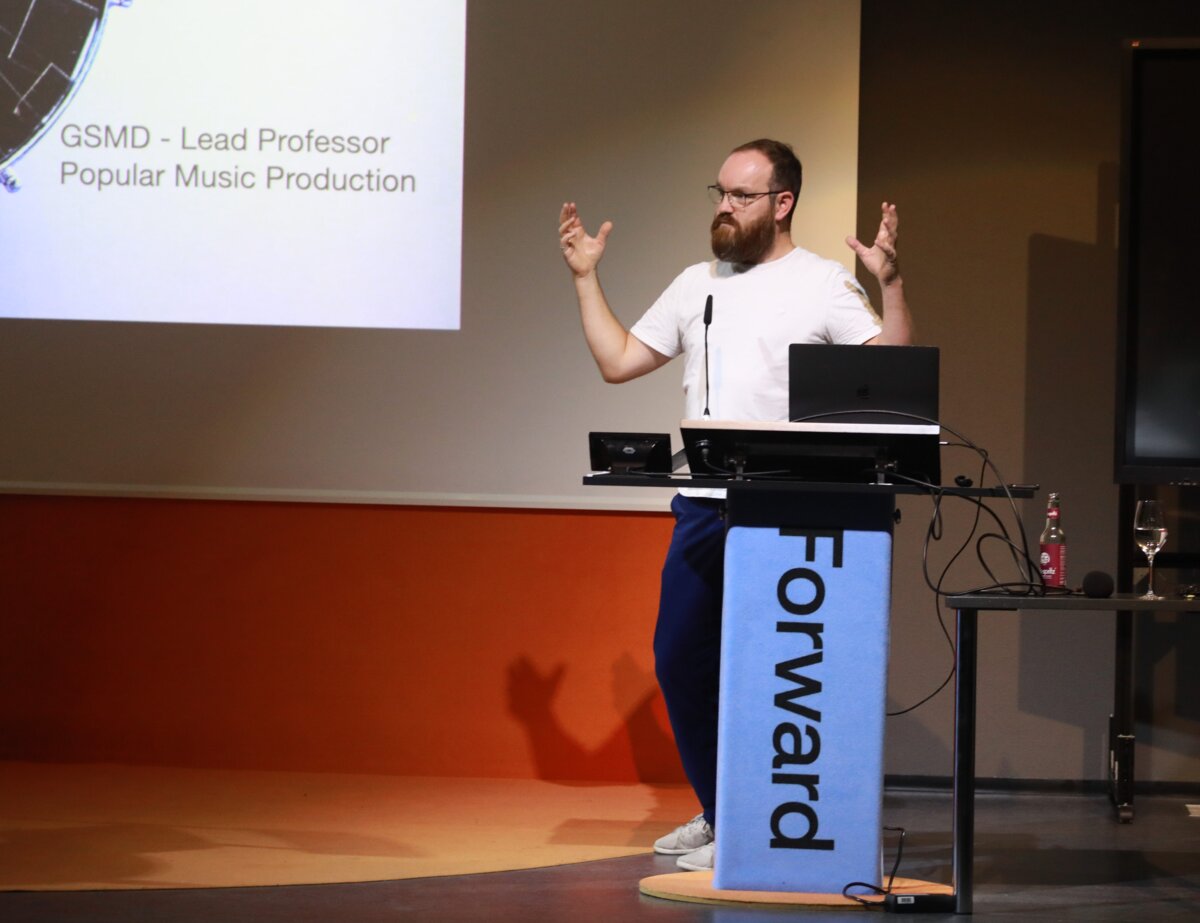
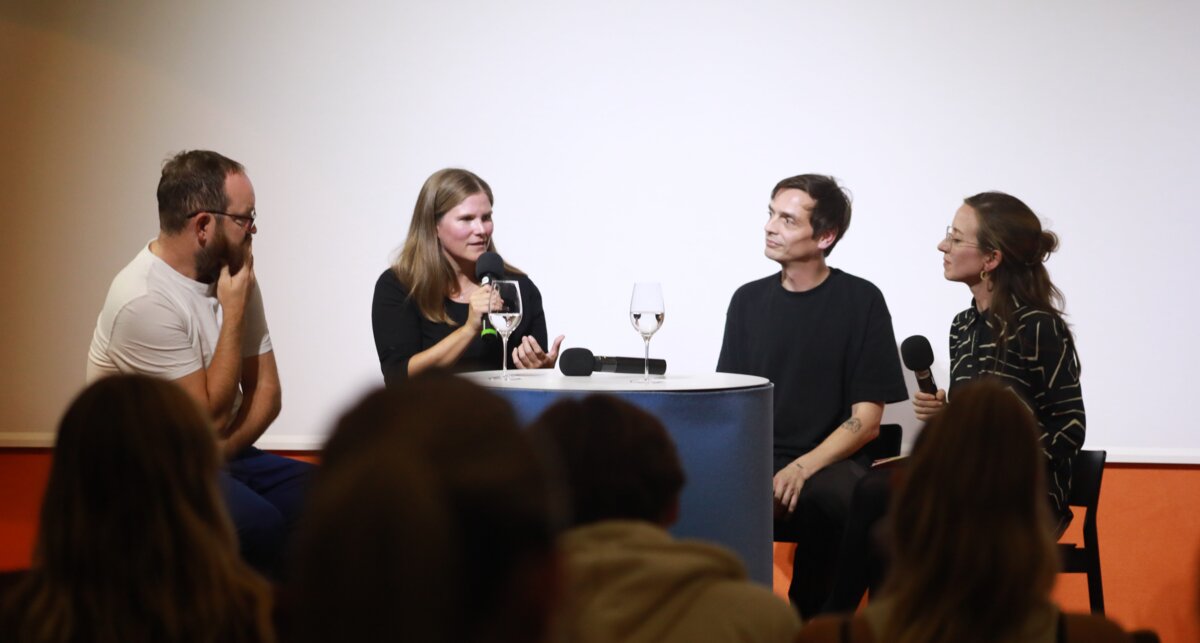
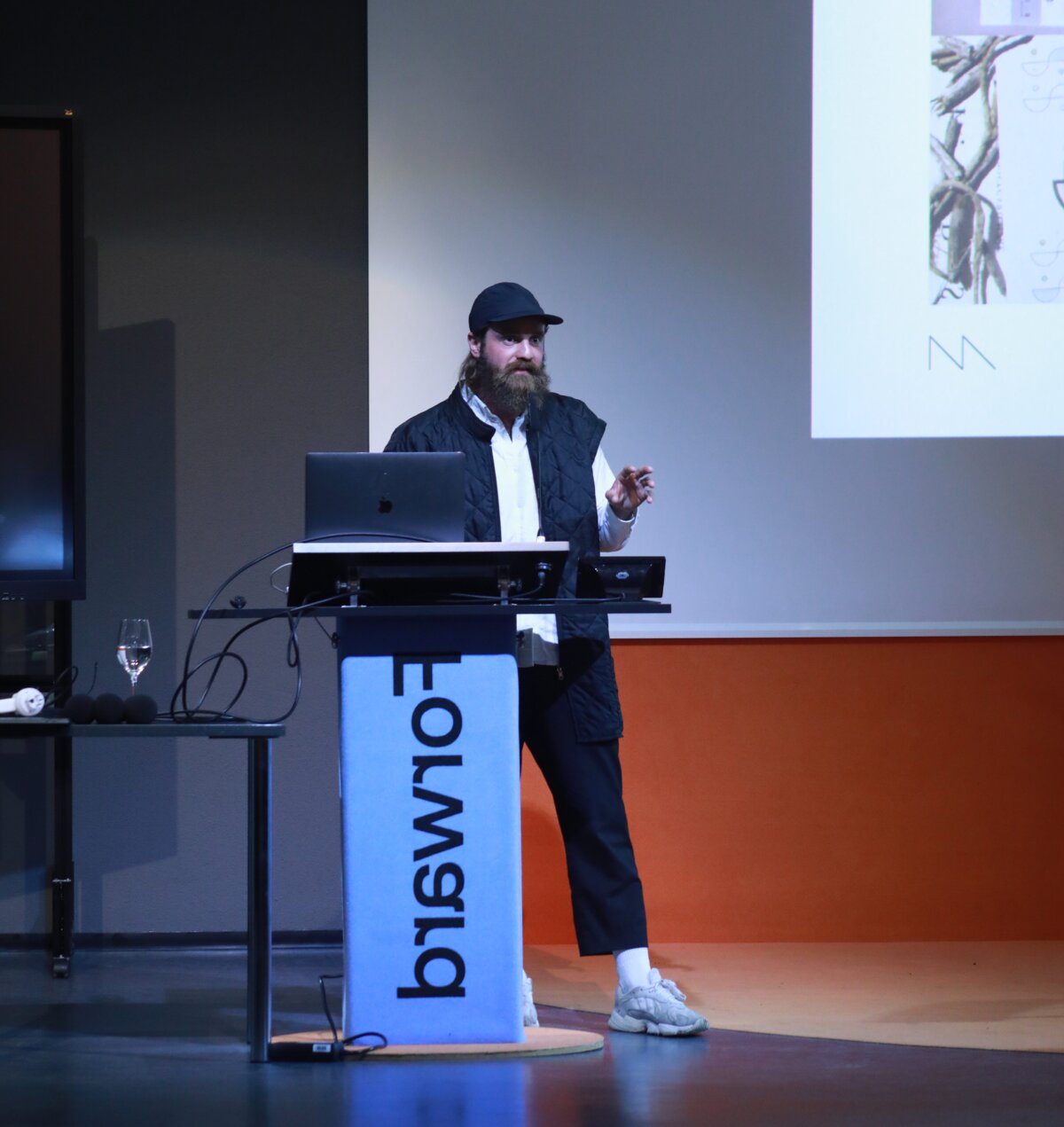
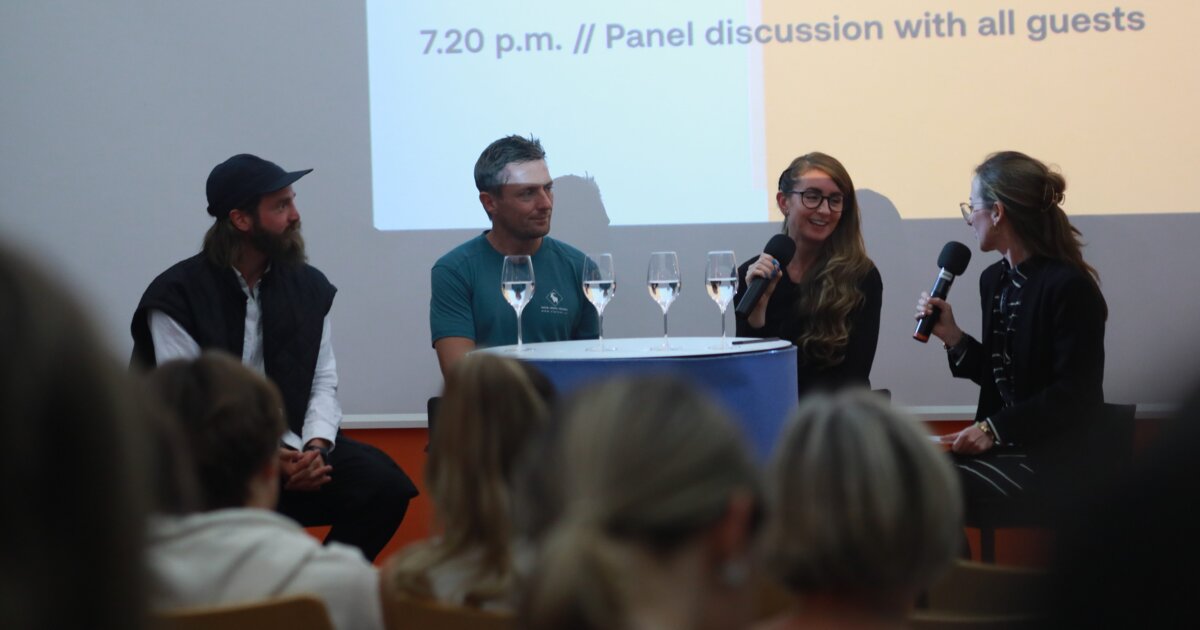
Jo Wills
The symposium opened the discussion on a society moving away from the ideal of perpetual growth, exploring the questions relevant for a livable future on this planet. It examined how topics such as nutrition, community, and the relationship between humans, technology, and the environment are negotiated in this society. This kind of forum is instrumental in debating and reshaping perceptions of sustainable living, questioning established paradigms, and collaboratively seeking innovative and ethical solutions to pressing global issues.
Nerd Talk
with Jo Wills und Katrin Berchtold
Various formats outlined the role of design on the path to a socially and ecologically sustainable future, demonstrating how its value and impact can unfold. The collected pressing questions formed the starting point for another symposium on systemic innovations in the post-growth society, which the Department of Design will host in June 2024. This event aims to further explore how design can contribute to transformative changes and address the complex challenges faced by societies seeking sustainable alternatives to traditional growth models.
Christoph Matt
In his lecture, Christoph Matt focused on more-than-human communities and explored interspecies and other relationships that extend beyond human interactions.
He discussed how embracing symbiosis and respecting biodiversity can shape a more sustainable world, promote the coexistence of all life forms, and secure a better future for coming generations. Christoph Matt is an Austrian eco-social designer and the founder of Studio Matt, a nomadic design base camp for environmentally conscious design based in Vienna. His work highlights the potential of design to influence societal norms and foster a deeper connection between humans and the natural world.
Nerd Talk
with Christoph Matt, Nadja Reife, Lukas Rinnhofer and the Head of the Design Department, Margarita Köhl.
Jo Wills
Jo discussed his diverse practice as a composer, performer, producer, teacher, and presenter, in which he collaborates with artists, ensembles, and communities. His lecture presented a unified practice model that originates from a clear sense of artistic identity and authenticity, and is flexible and responsive to the specific context of the work.
Jo elaborated on his collaborations with Drum Works CIC, the Guildhall School of Music and Drama, and the independent label WW Records. This approach not only highlights his multifaceted career but also illustrates the interconnectedness of different artistic disciplines and the importance of adaptability in creative industries.
Digital In&Out
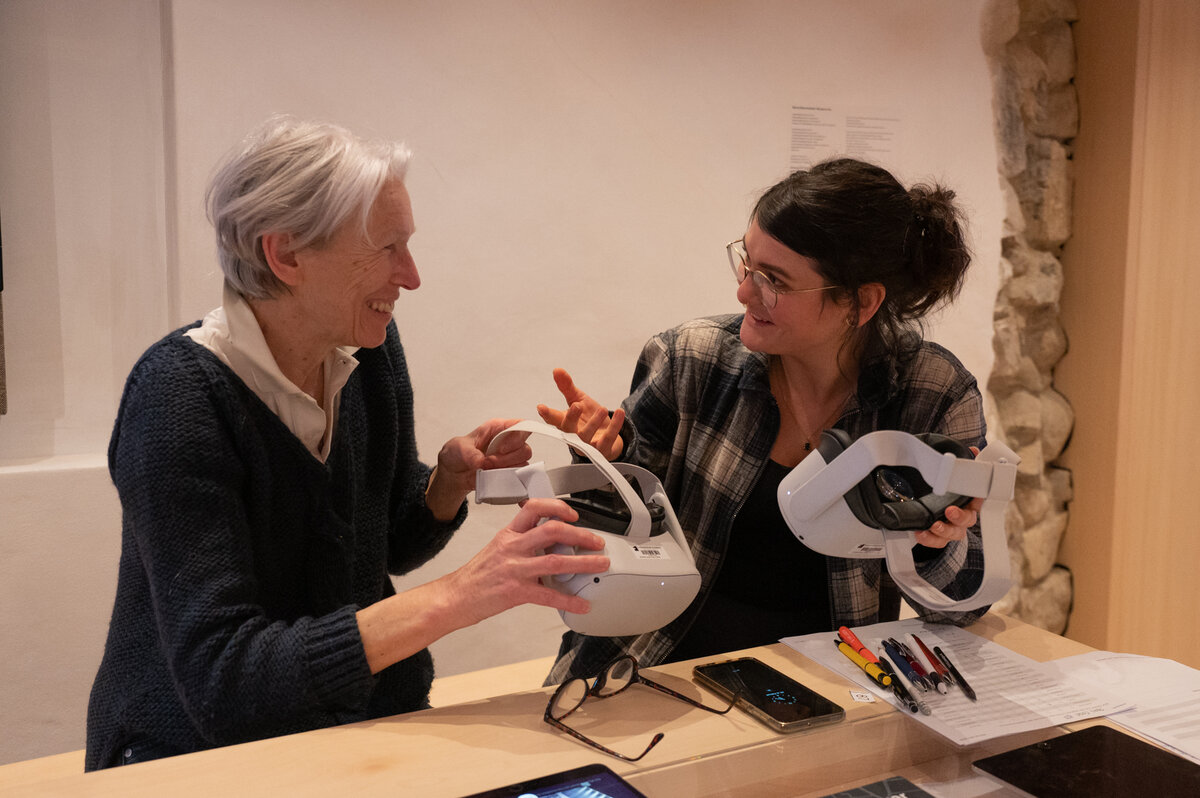
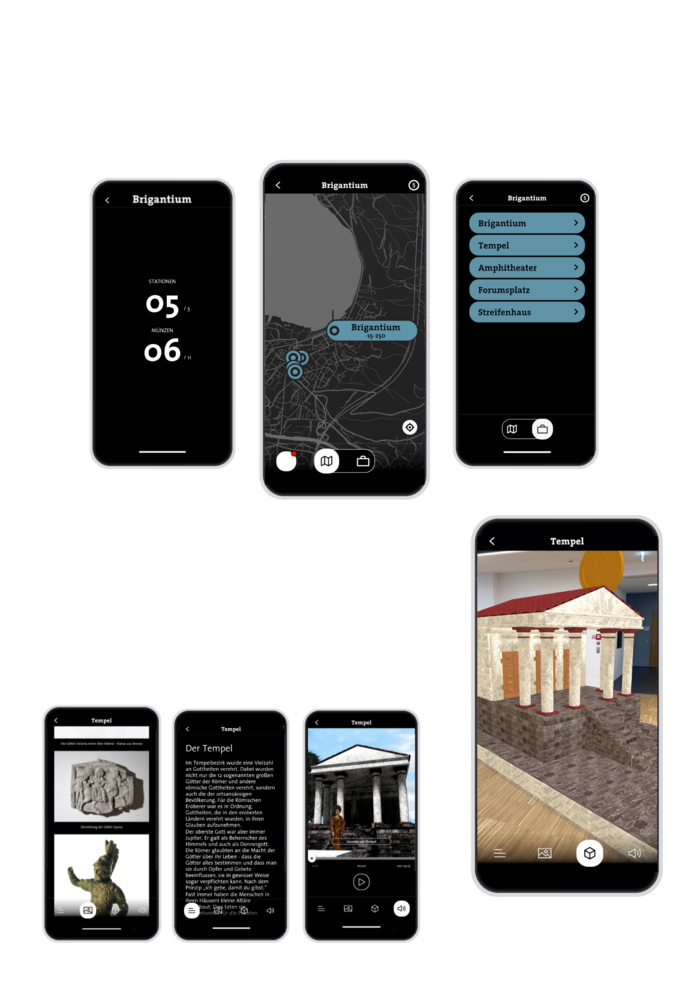
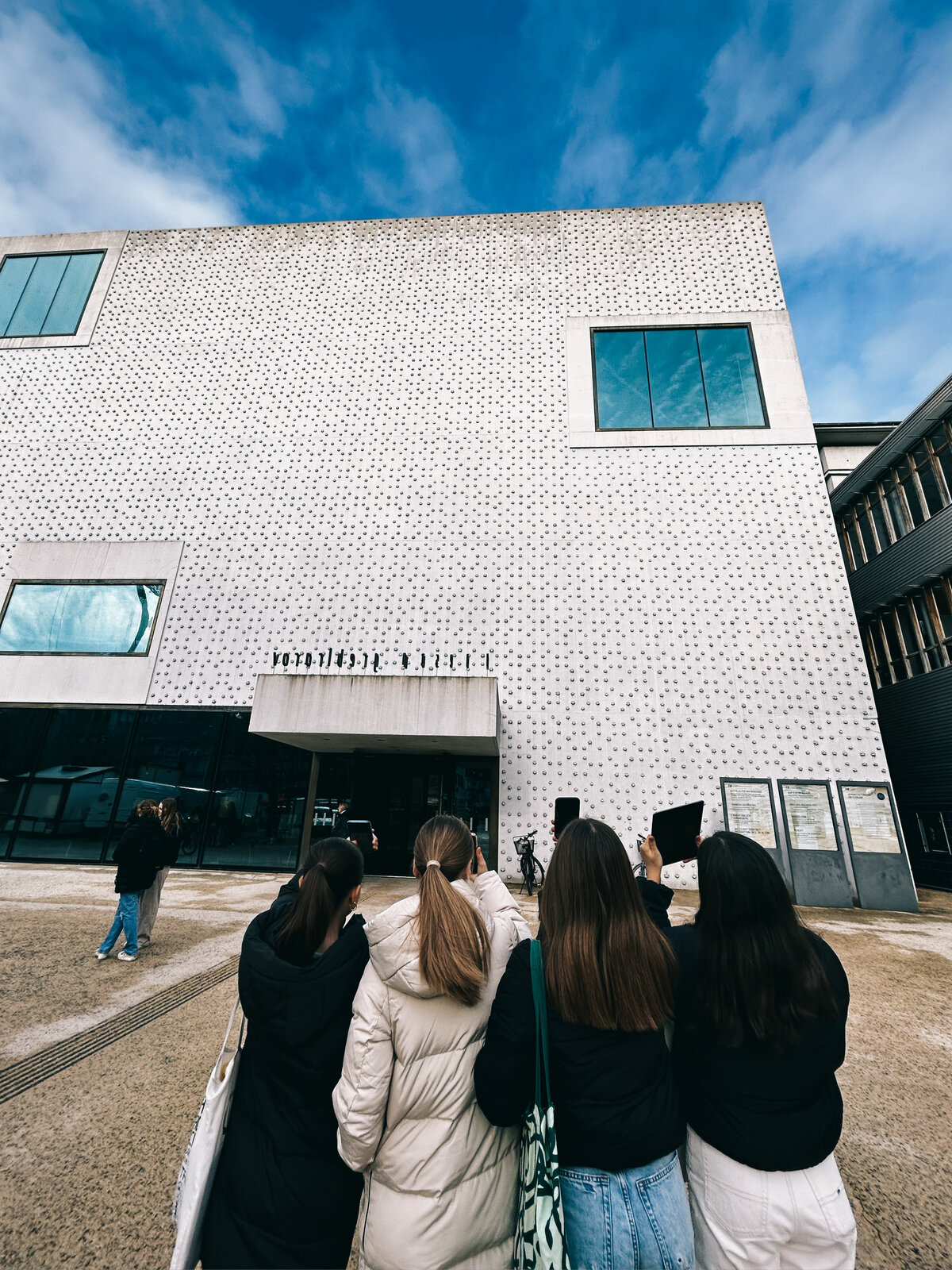
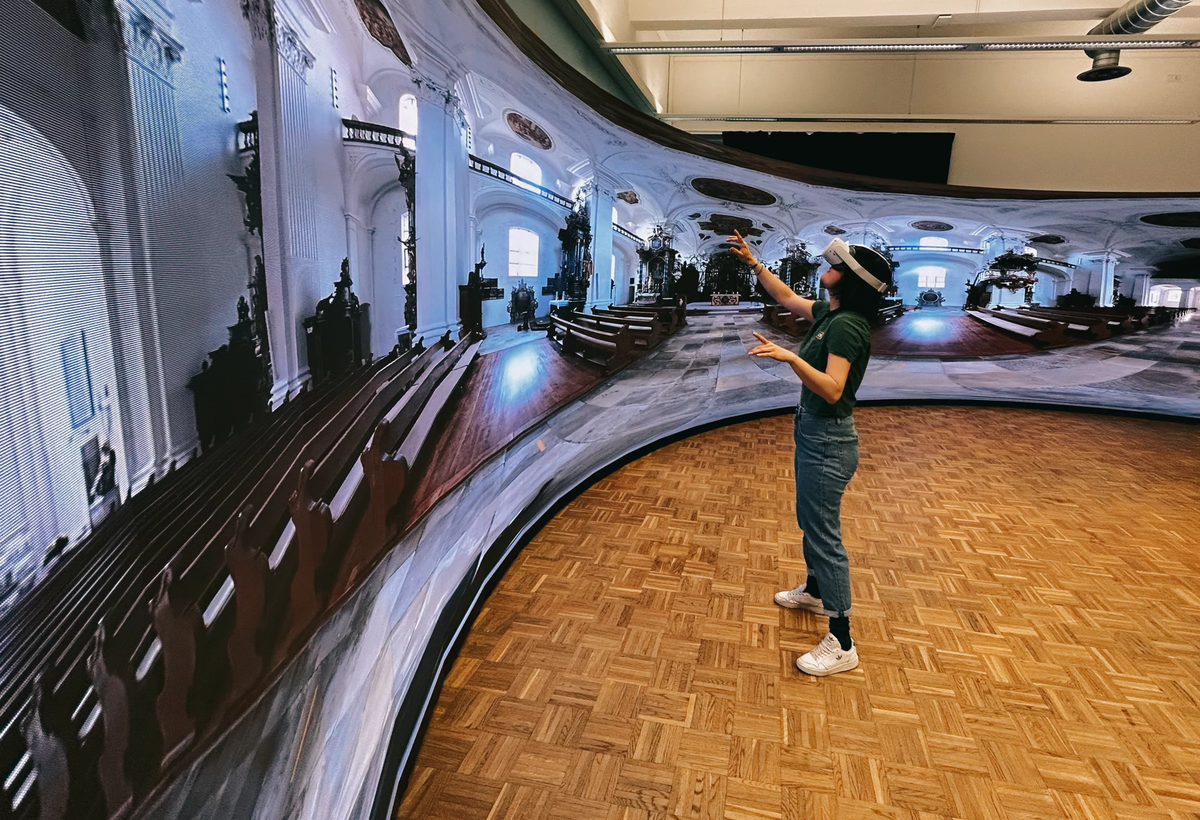
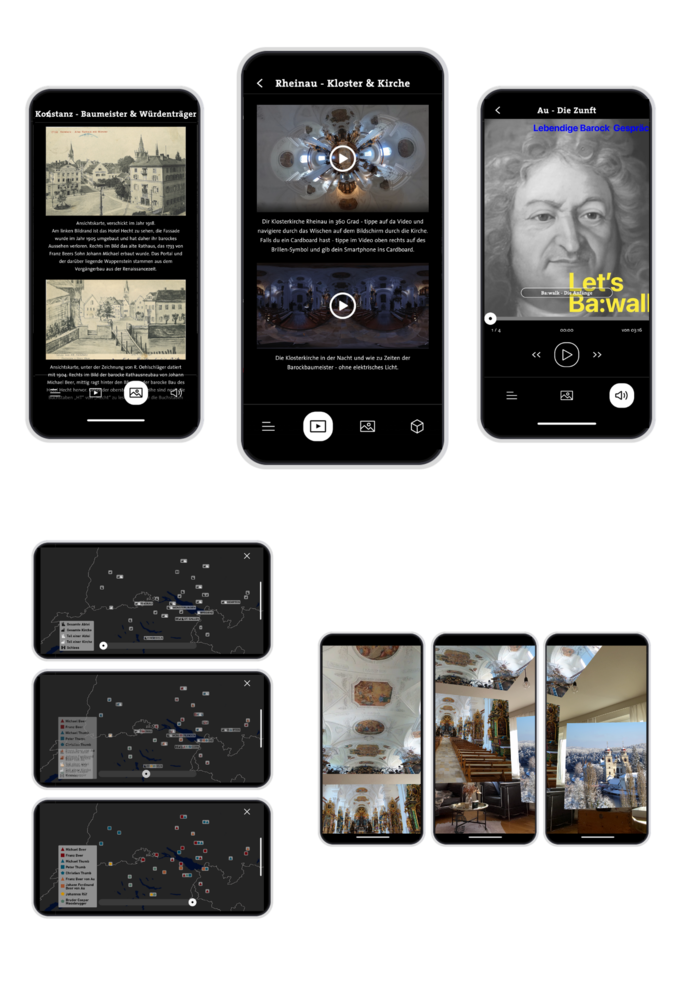
Digital journey through time in Bregenz
In Bregenz, marvel at the Roman theater or the grand Forum Romanum while listening to a historical figure talk about their life in the ancient settlement. Or travel from home to the magnificent churches built by the Baroque architects of the Bregenzerwald. An interdisciplinary research project, implemented by the Department of Design in collaboration with the Vorarlberg Museum, makes this possible.
Opportunities and Risks of Digitalization in Museums
Opportunities and Risks of Digitalization in the Museum Context
The pros and cons of digitalization in the museum sector continue to be a subject of contentious debate: What digital tools do museums employ in various thematic contexts? And how effective are they? These questions were addressed by Marilena Tumler from the research team of the Design Department in the project "Digital In & Out" – another collaboration between the Design Department and the Vorarlberg Museum.
Marilena examined a Virtual Reality project that her colleague Florian Ramsebner had submitted as a bachelor's thesis at the Design Department. Elements of this work – specifically the buildings of Roman Brigantium, today's Bregenz – were to be transferred from Virtual Reality to Augmented Reality as part of the Cross-Reality research.
Von Virtual zu Augmented Reality
With Augmented Reality elements, a novel museum presentation is possible, which, for example, allows ancient buildings and their stories to be integrated into today's cityscape. In this way, we can playfully place buildings at the locations where they stood during Roman times. Educational psychology mechanisms such as the "sense of place" occur, and both historical thinking and the acquisition of historical didactic competencies are enhanced.
Building on her experiences as a researcher in the fields of history education and technology-assisted teaching, Marilena Tumler developed a concept for a multimedia Mixed Reality application that includes both informative and playful elements.
Cross-reality-research
This demonstrates that content processed through Virtual and Augmented Reality is well-received not only by young people but also by older adults. "There are aspects—like the size of buildings that no longer exist in relation to other structures—that can be conveyed better using these technologies," emphasizes Margarita Köhl, head of the Design Department at FHV. The test subjects particularly highlighted the Augmented Reality spaces and the 360-degree videos, with the guiding narrative, the stories of Lucrezia or Franz Beer, being considered "especially helpful."
A key finding of the study is that immersive applications increase learning motivation and success. This was evident when compared to a control group that engaged with Brigantium or the Baroque master builders without immersive experiences.
Contact
New Museum Worlds
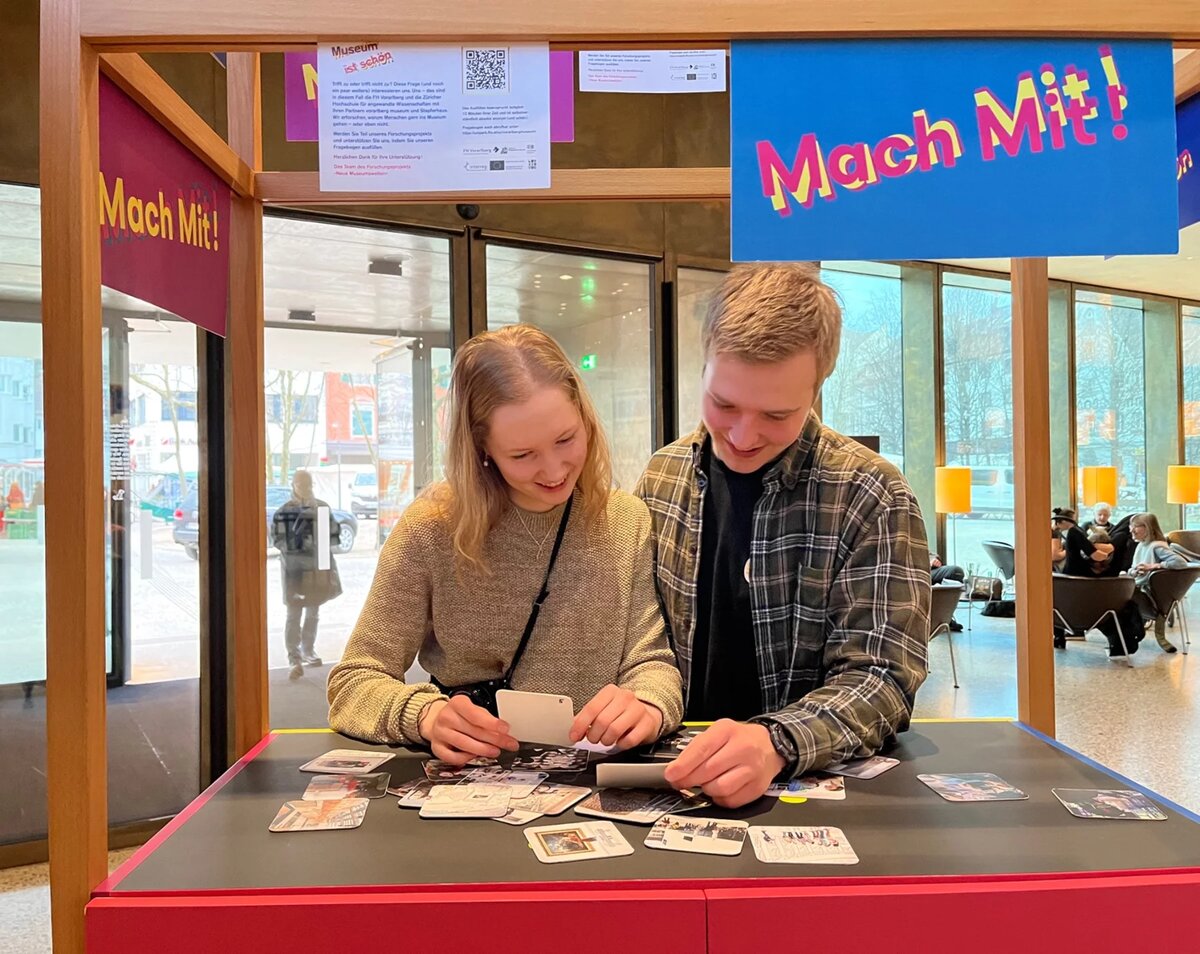
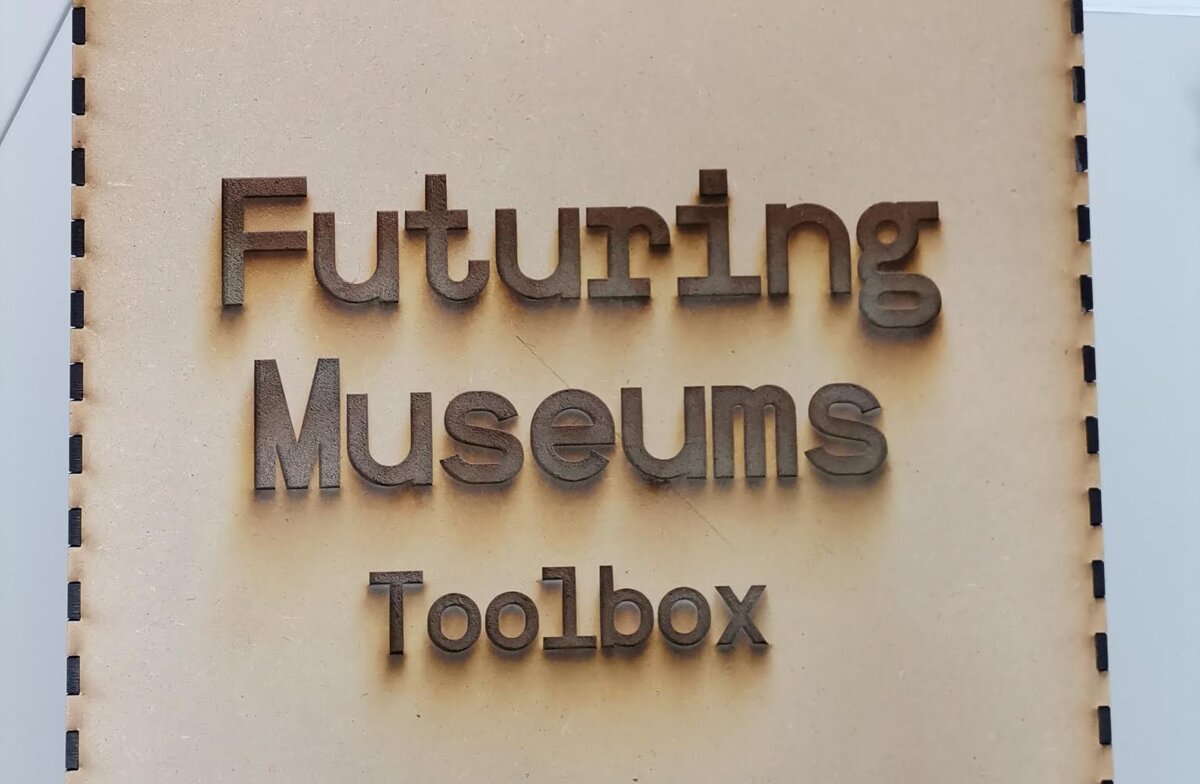
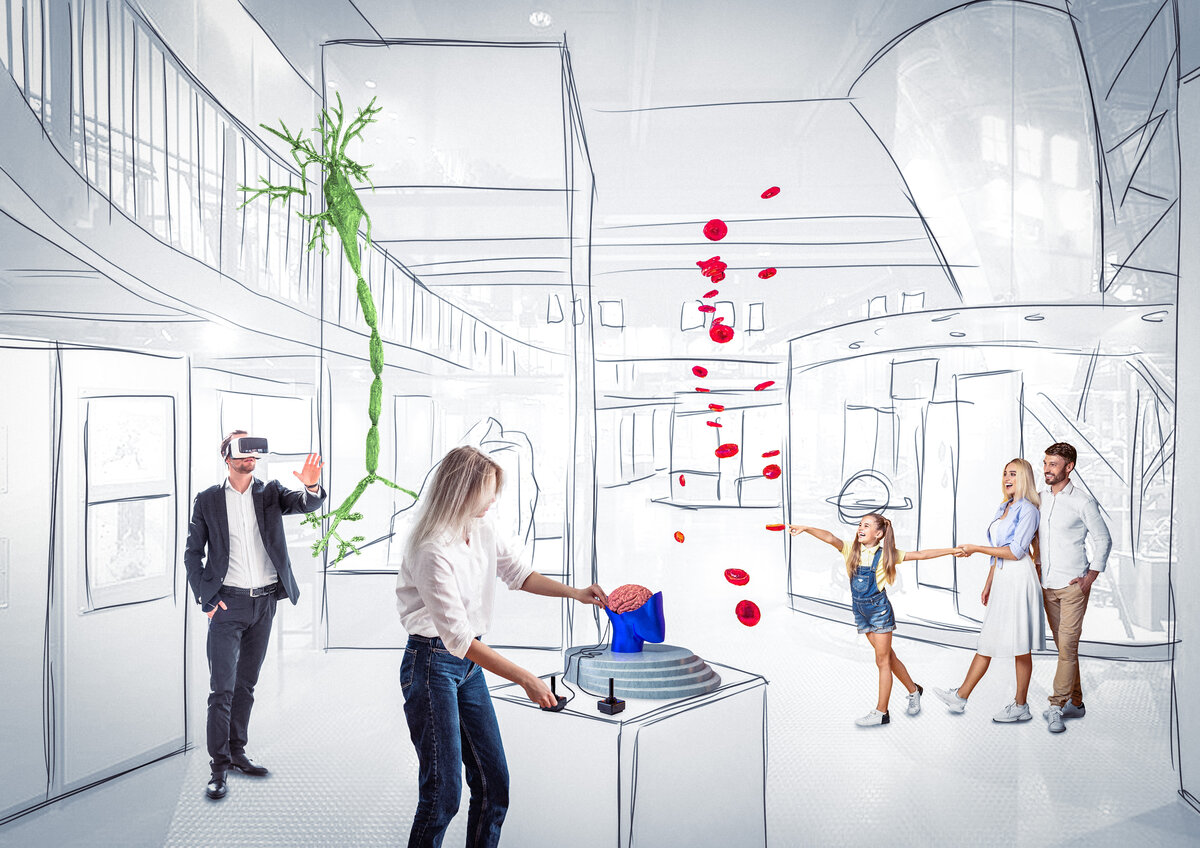
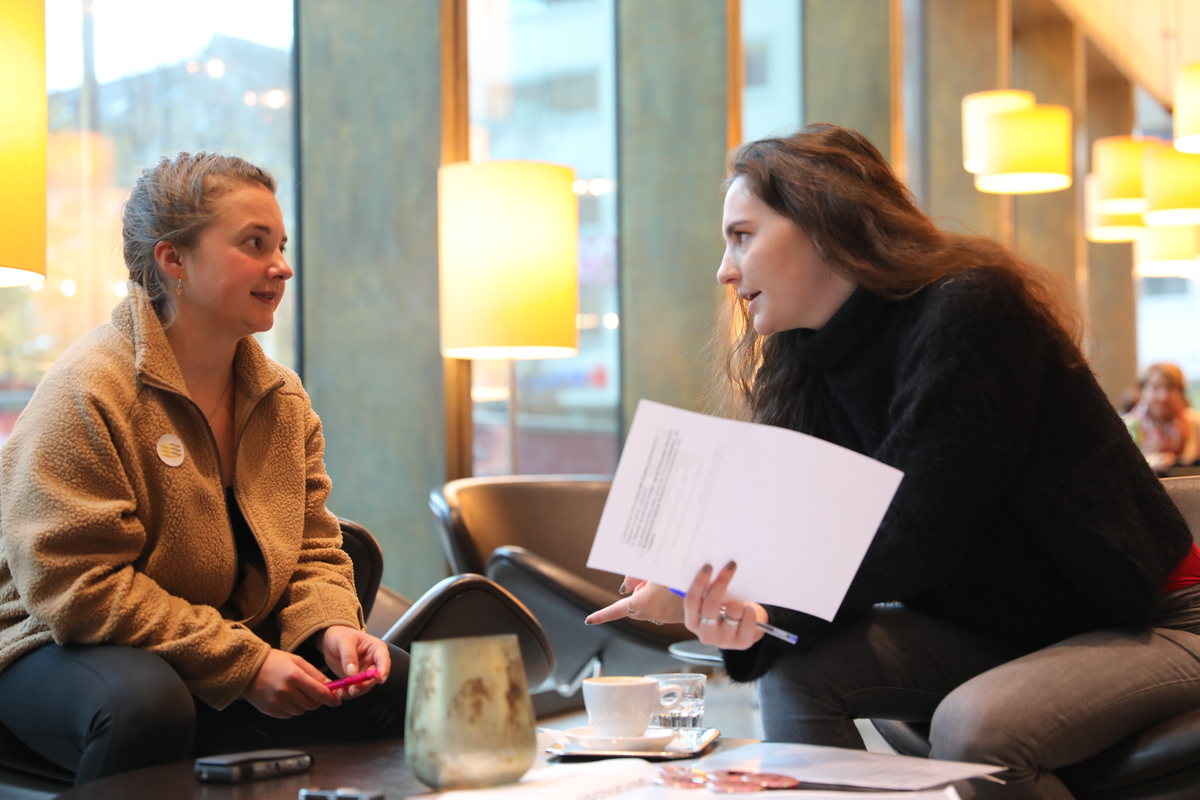
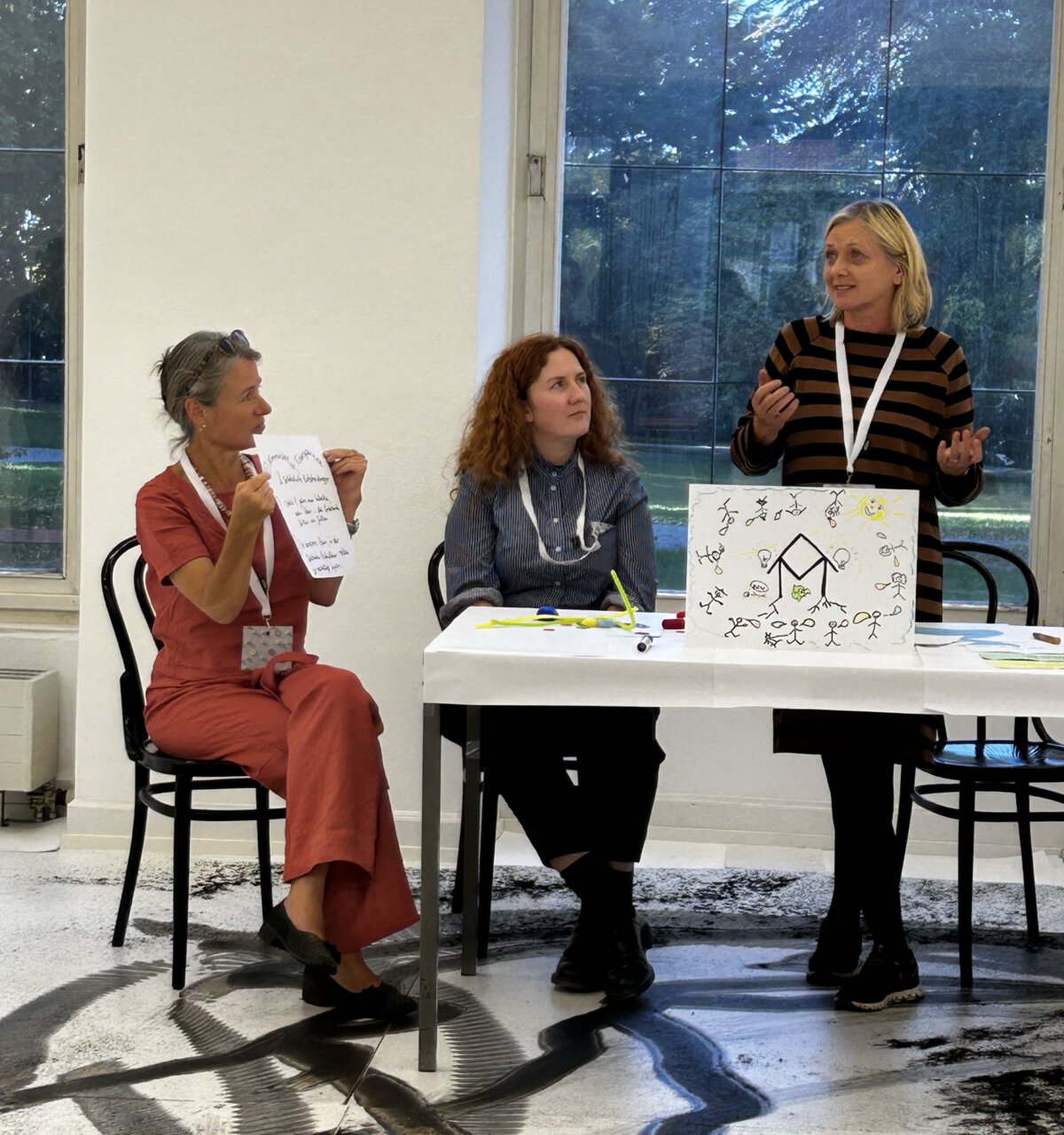
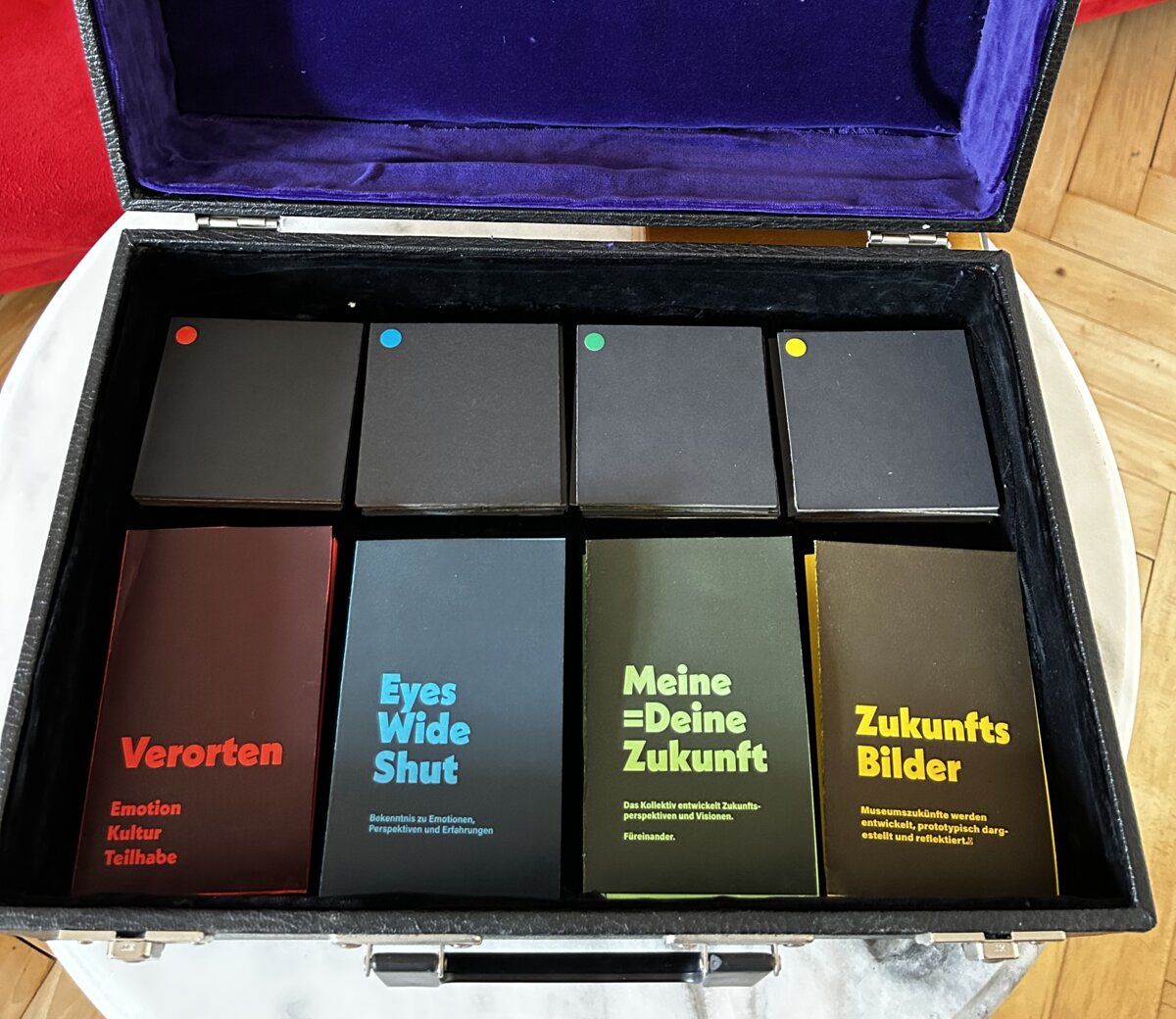
(Non-)Audience research in museums
The cross-border Interreg-ABH-V project "New Museum Worlds" was successfully completed in June 2023 in cooperation with the ZHAW Zurich University of Applied Sciences. It focused on the question of how museums can make their offerings more attractive to a broader segment of the population. The team from the Research Group for Empirical Social Sciences and the Design Department at FHV, along with their project and practice partners, adopted an integrative research approach.
Audience and population surveys
In collaboration with the Center for Cultural Management at the Zurich University of Applied Sciences, the Vorarlberg Museum in Bregenz, the Stapferhaus in Lenzburg, and the Department of Culture of the Vorarlberg State Administration, the interdisciplinary project team at FHV investigated how museums can better engage their audience, including those who have not previously visited museums.
Cardsorting
The project combined methods from social and cultural management research with approaches from research through design. A key insight was that the goal of reaching all population groups is hardly achievable with a reasonable amount of resources. Fabian A. Rebitzer, head of the Empirical Social Sciences Research Group, explains: "Generating enthusiasm for museum visits among individuals who have had negative experiences with museums in the past or who generally have different interests is extremely challenging and requires relational work, such as a personal invitation from someone in that person's social circle."
Museumswalks
The surveys show that there is no uniform audience for all museums. Some people do not consider visiting museums, often due to misconceptions. Museum visitors are looking for an enjoyable time that appeals to their interests or satisfies their curiosity. The challenge for museums lies in meeting diverse expectations, from traditional to interactive, in order to attract a broader audience. Innovations must be integrated without losing what has proven effective.
In addition to research activities, accompanied visits in the form of "Museum Walks" were offered at the Vorarlberg Museum. Through card sorting in public spaces, interested parties were able to express their preferences by arranging visual motifs.
Futures Workshops
In Futures Workshops, in collaboration with experts, visitors, and non-visitors, future visions, development paths, and scenarios for museums were developed.
Recommendations for the future
Regarding the involvement of visitors in the future of museums, Margarita Köhl, head of the Design Department, recommends "integrating interaction opportunities into exhibitions that are tailored to the life worlds of the audience and making use of existing social networks or communities."
Ars Electronica 2022
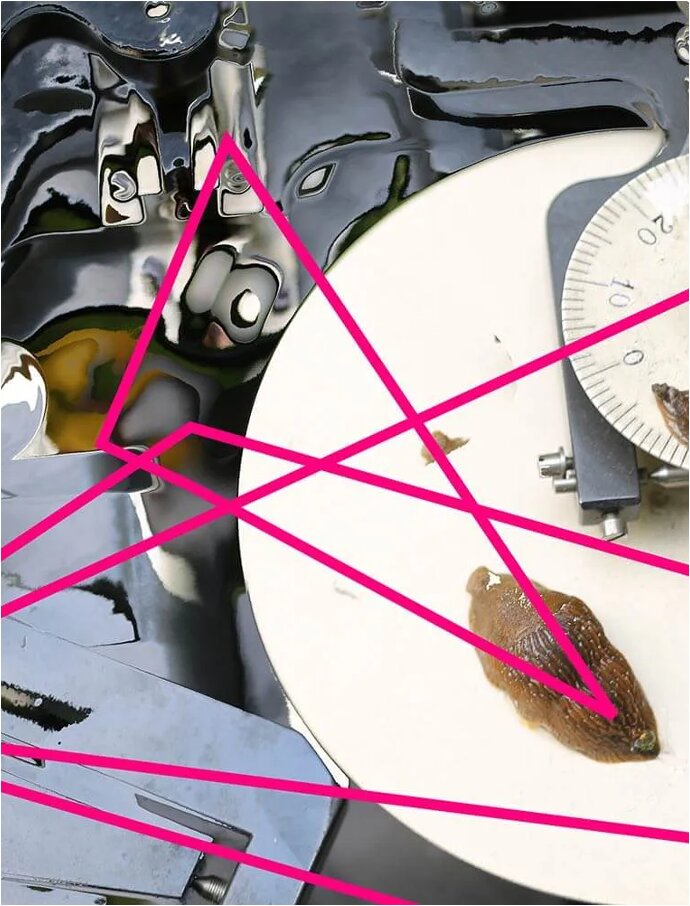
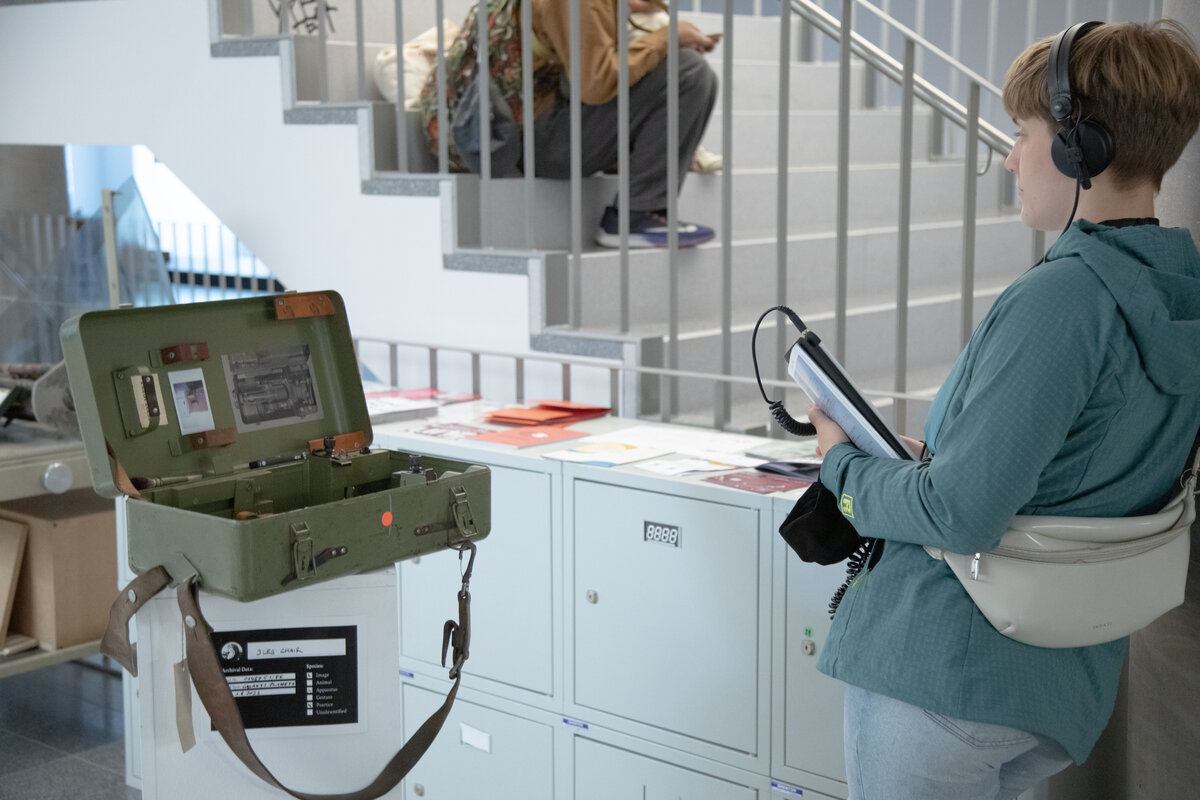
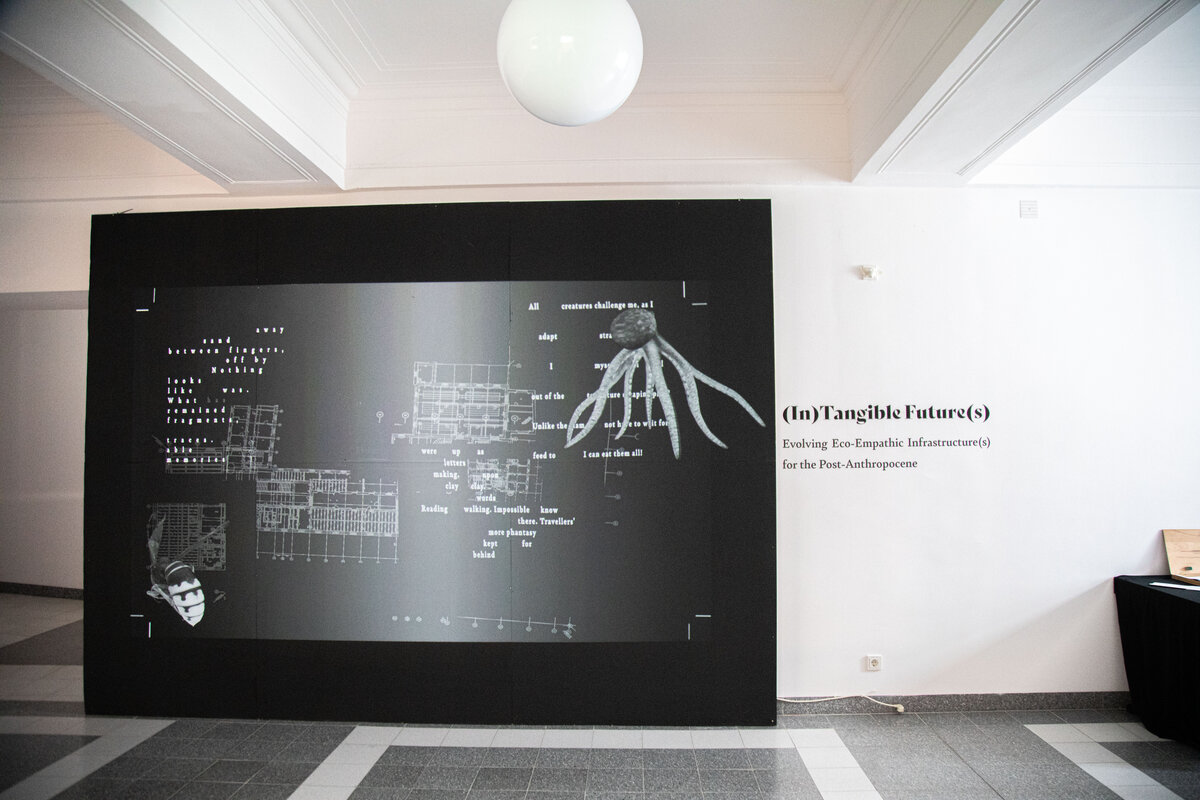
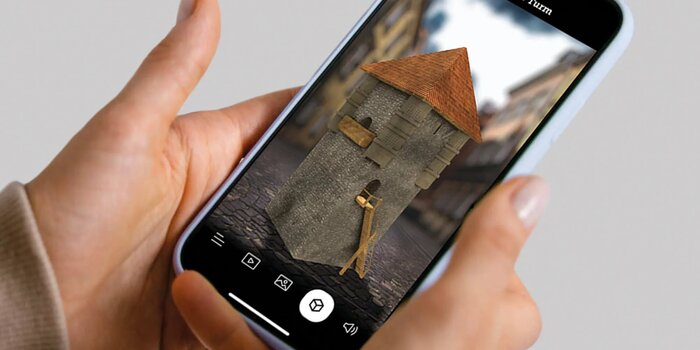
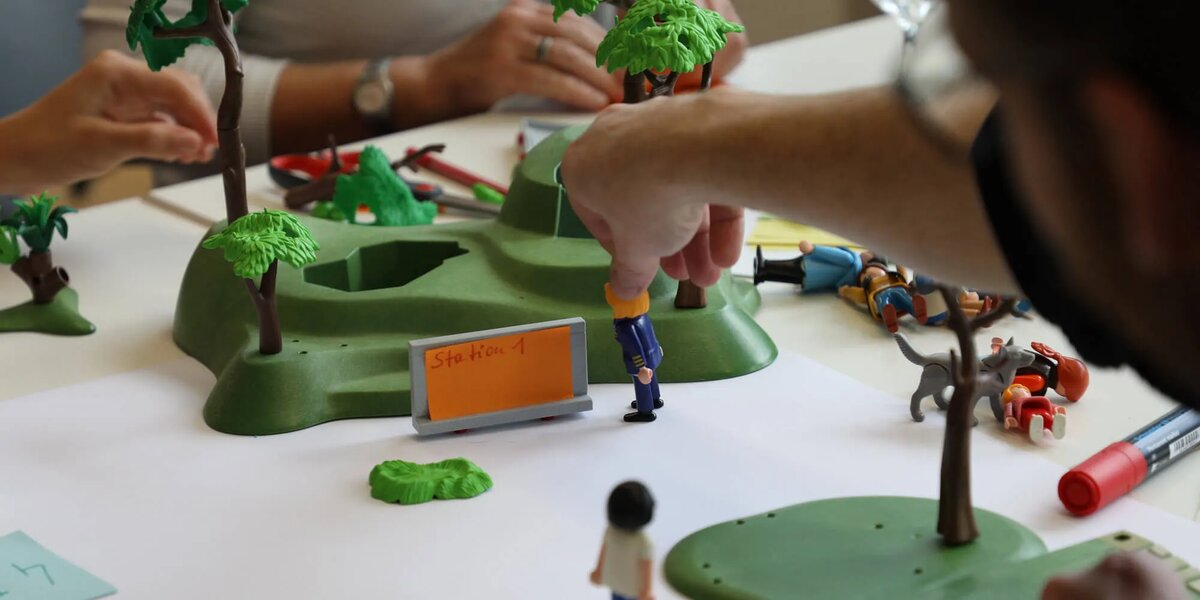
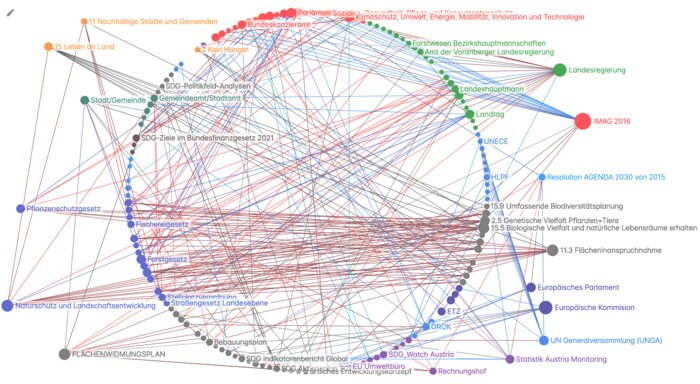
Welcome to Planet B.
The Ars Electronica Festival 2022, which took place from September 7 to 11 in Linz, explored the vision of an alternative life on "Planet B."
The Department of Design participated with the exhibition "(In)Tangible Future(s) - Evolving Eco-Empathic Infrastructure(s) for the Post-Anthropocene." Dive into the fascinating world of post-anthropocentric perspectives on ecological justice.
A post-anthropocentric scenario
Building on the festival's theme, "Welcome to Planet B," the Department of Design's exhibition sketched a post-anthropocentric world where ecological justice prevails. Humans were no longer considered superior, as all species coexisted as equals.
This future scenario was the starting point for the exhibition, which cast a critical eye on "Planet A" but also brought to life possible worlds on "Planet B": In an audio walk developed in cooperation with the Design Research Institute LIDA of the RUN-EU partner Politécnico de Leiria, visitors could experience what cross-species empathy might feel like.
Past, Present, and Future in Mixed Reality
Another project, conveyed through Mixed Reality, portrayed the past of the planet, exploring how future generations might remember Planet A. Additionally, it examined the physical and imaginary boundaries present on Planet A from the perspective of psychogeography, which limited societal participation of people.
Museum of artifacts or practices?
The project revitalizes the history of Brigantium and the Baroque master builders from the Bregenzerwald using Mixed Reality and anchored storytelling. With 360-degree videos, 3D models, animated illustrations, podcasts, as well as physical models and portrayals of the past, it aims to enable visitors and locals to take a virtual journey through time.
The application is intended to become a valuable tool for museums, educators, storytellers, and of course, the people who will inhabit a future world, to immerse themselves in the past on Planet B.
Futures Workshop
During a workshop, participants explored the question of which artifacts, experiences, and practices we want to collect, preserve, and make accessible for the future – essentially, what the desired museum of the future looks like and how it interacts with its visitors.
Mapping Complex System Dynamics
The workshop also illustrated a potential, ecologically and socially sustainable coexistence on Planet B: What might a framework look like that serves as a guideline for sustainable decisions on the new planet? Through a multidimensional, interactive mapping, visitors were able to grasp the possibilities of implementing the Sustainable Development Goals in connection with various political levels.
Long Night of Research
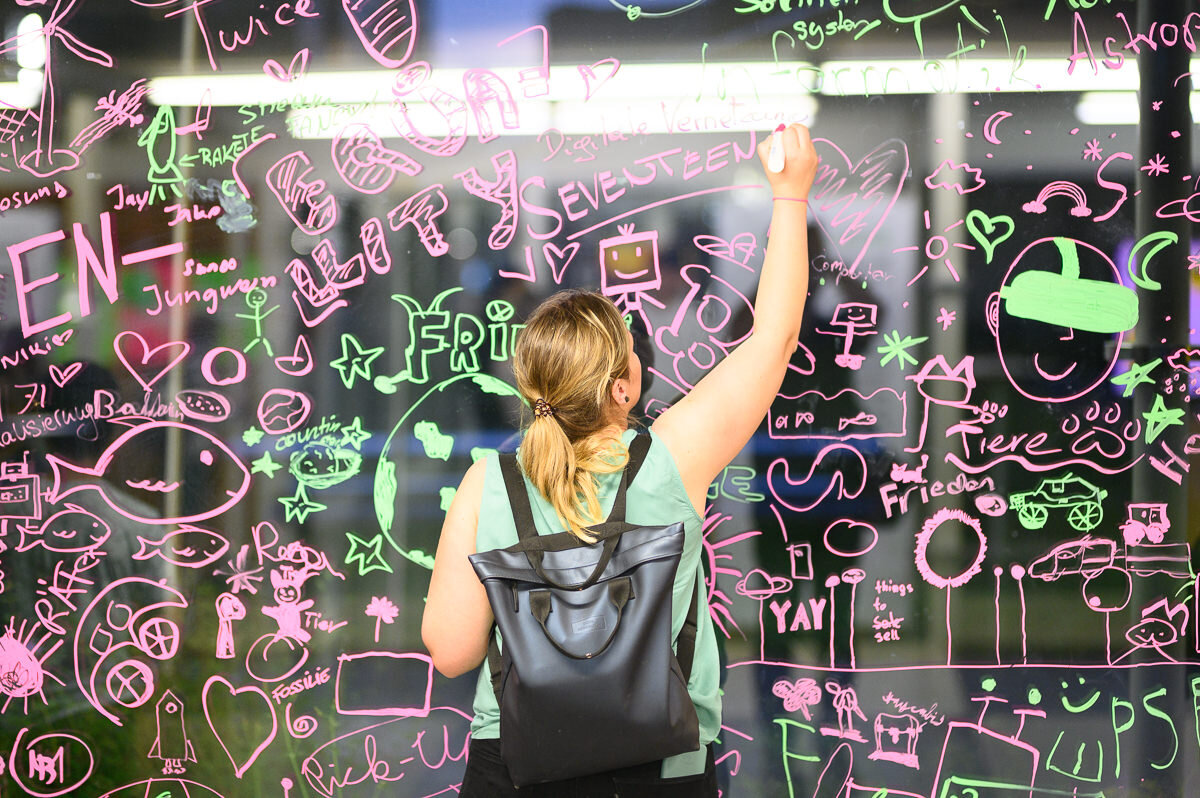
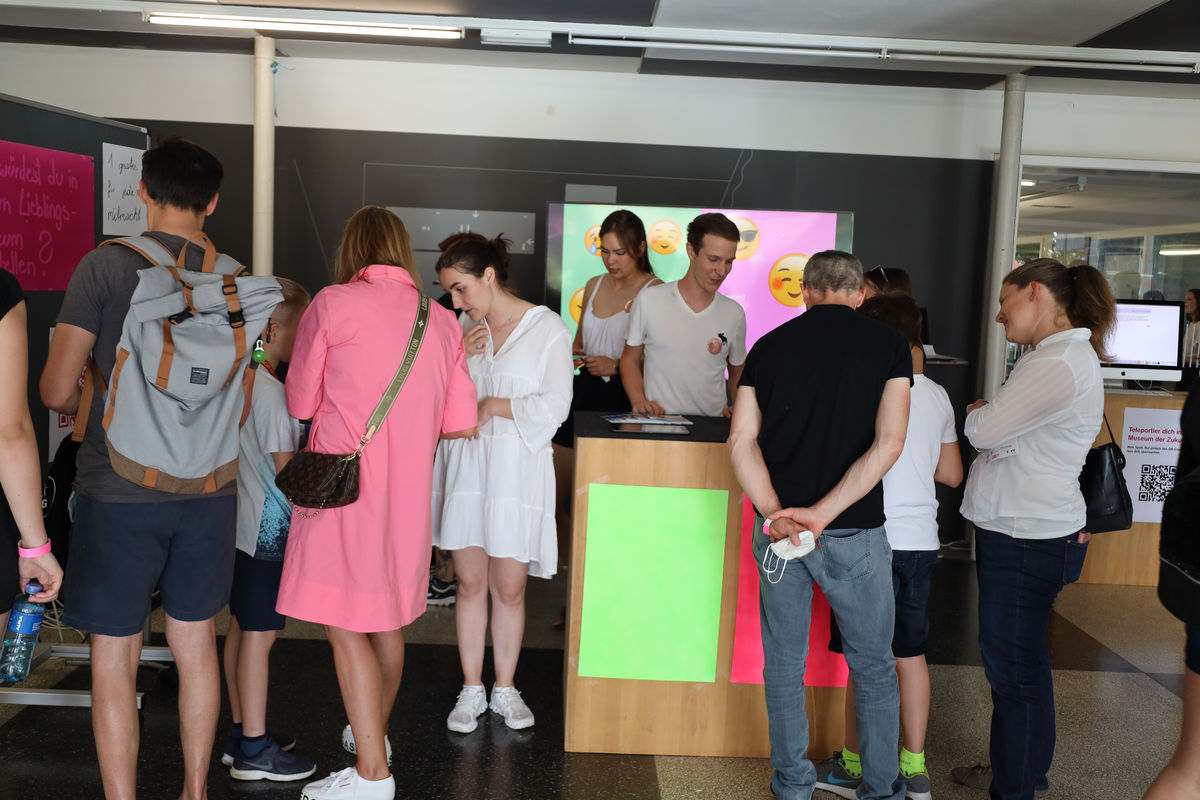
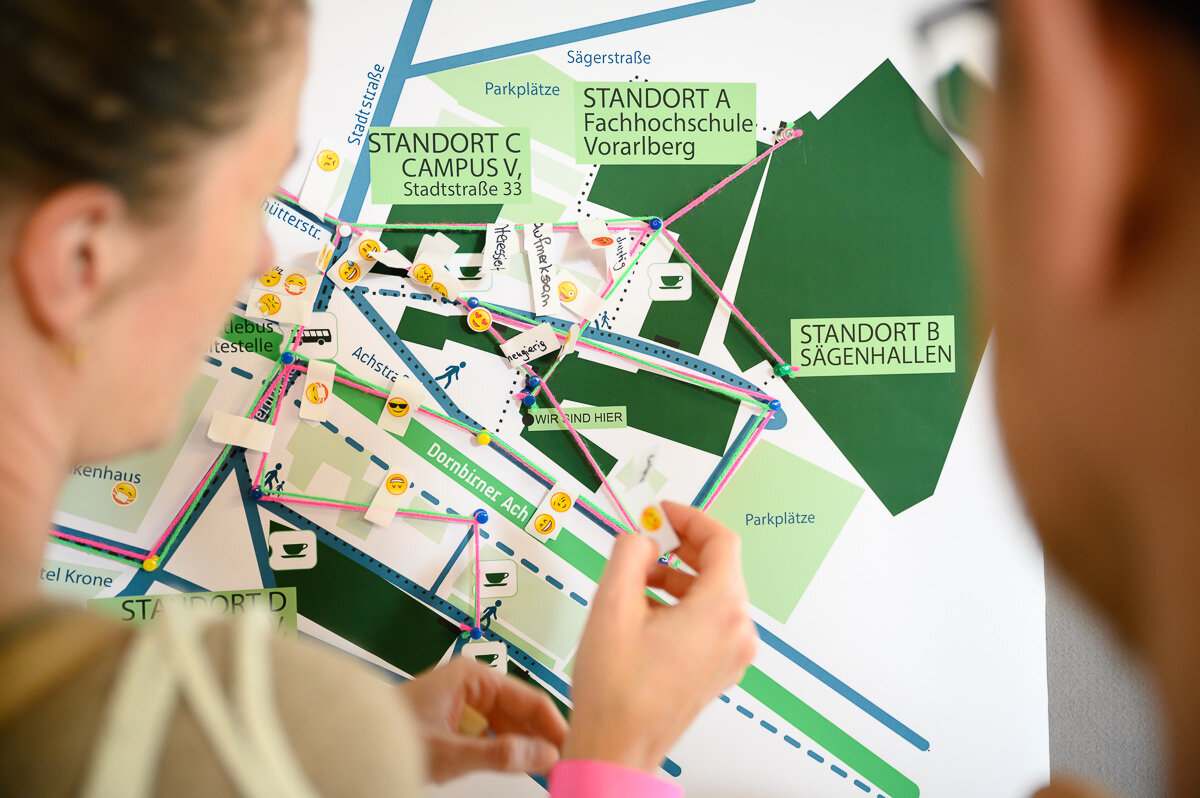
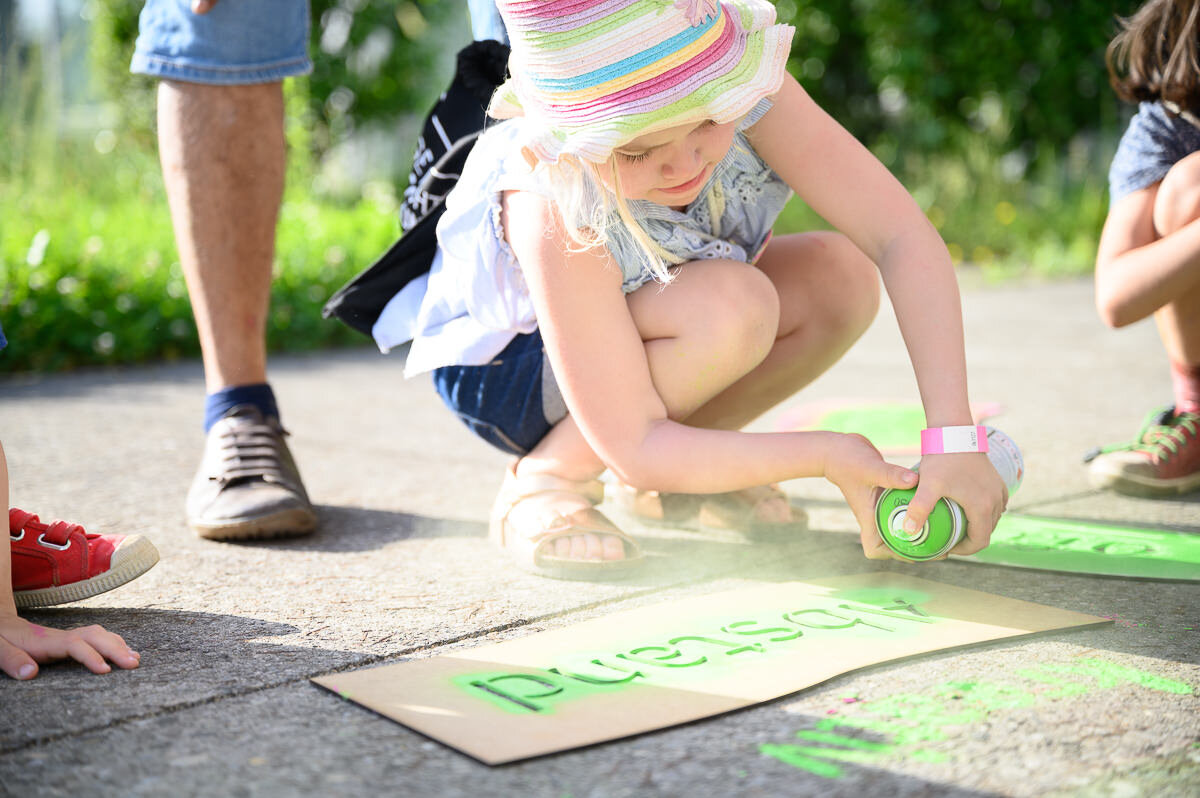
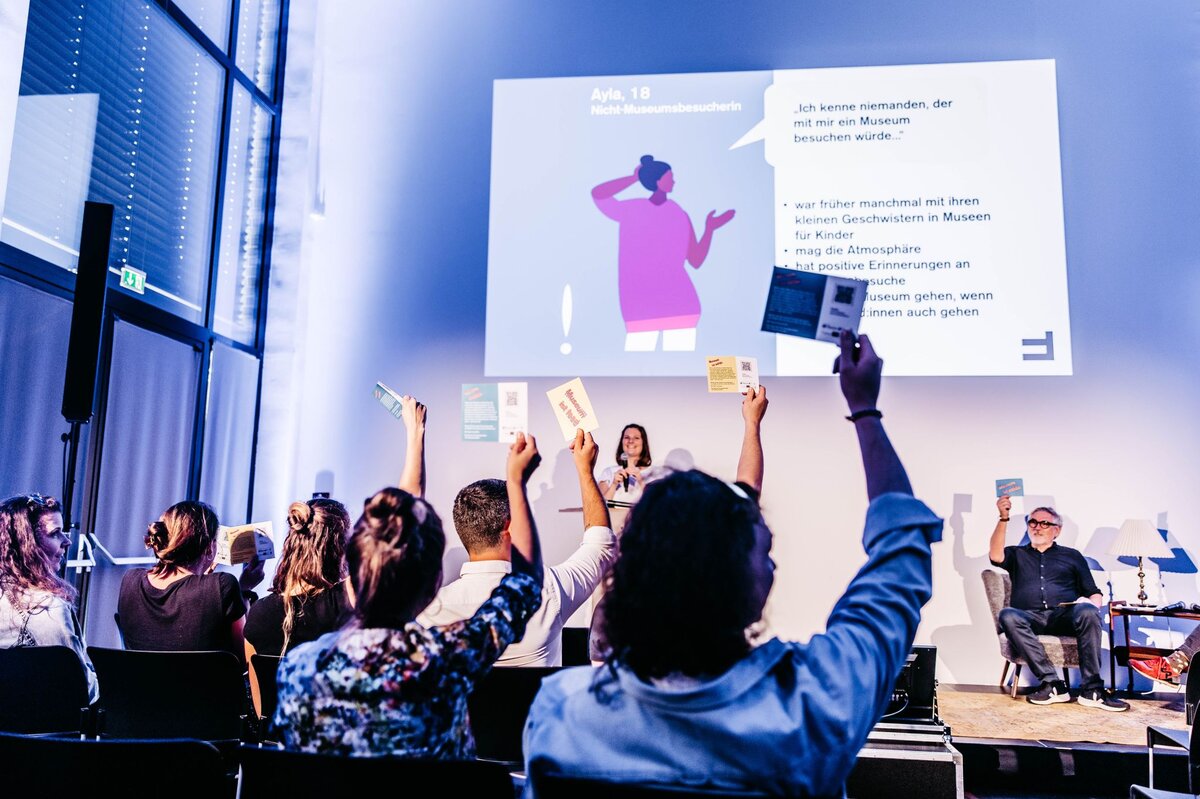
Join In! Museum
Experience the fascination of design up close at the "Join In! Museum" - an interactive exhibition that took place as part of the Long Night of Research 2022. Our department opened its doors and invited the audience to be part of a participatory vision for the future of museums.
Participation and interaction
The event provided a unique opportunity to explore the diversity of design disciplines at our university and actively participate in them. Visitors had the chance to be more than just spectators; they could actively shape their own experiences. The central idea was to transform museum visits into interactive and participatory experiences.
Creative student works break with museum conventions
Creative student works break with museum conventions, pushing the boundaries of traditional exhibition formats and challenging visitors' perceptions and expectations.
y participating in the Long Night of Research 2022, you not only gained insight into the creative world of design but also contributed to shaping a shared vision for the future of museums. We appreciate your interest and involvement in this unique event, which underscores our mission to position design as an integral part of cultural development.
PechaKucha Night
Pecha Kucha is a presentation method where speakers show 20 images or slides, each displayed for exactly 20 seconds. This means the total duration of the presentation is 6 minutes and 40 seconds.
The name "Pecha Kucha" comes from Japanese and roughly translates to "chit-chat" or "talk without coherence." This method is often used in creative and informal environments to facilitate effective and dynamic presentations.
The following projects were presented in this format by the Department of Design:
- New Museum Worlds (Jasmin Fischbacher, MA)
- Visualization of Complex System Dynamics (Magdalena Haidacher, MA)
- Digital In and Out (Florian Ramsebner, BA)